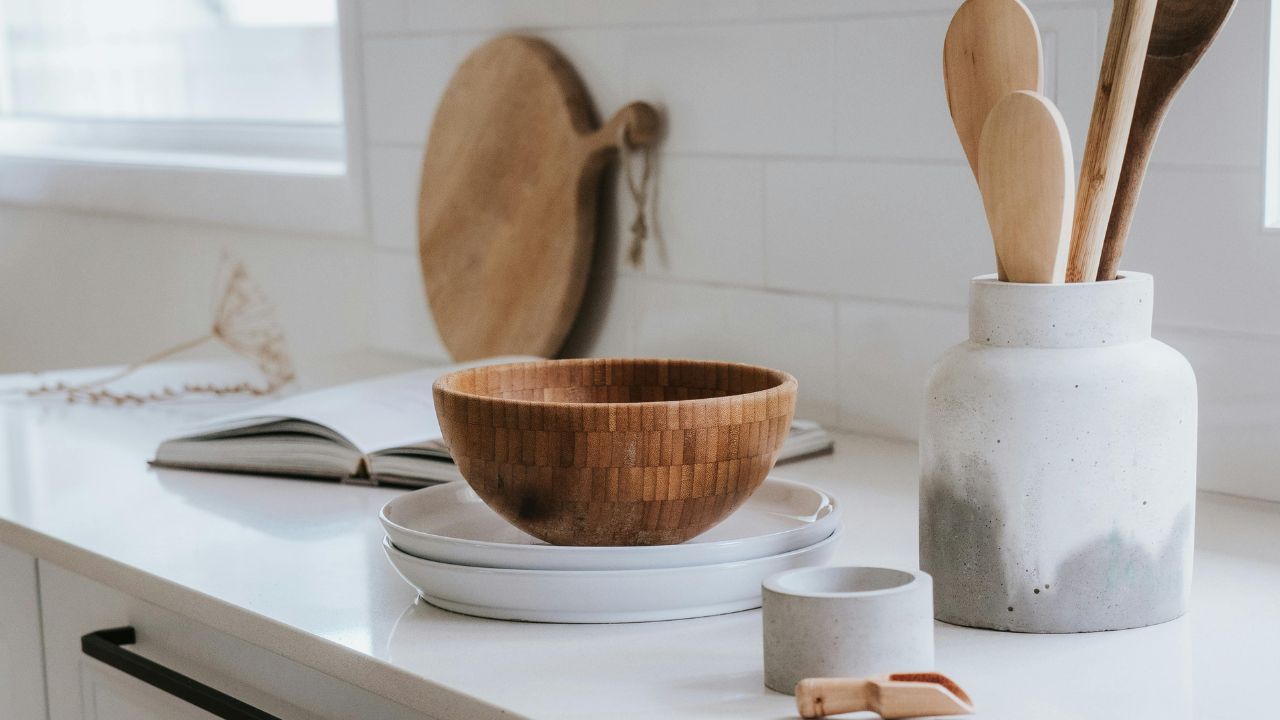What makes utensils made of olive wood so special?
Olive wood kitchen utensils you can tell right away that olive wood cooking equipment is exceptional. The trees that make them have been there for hundreds of years and have done well in the Mediterranean sun. Because this wood has been around for so long, it is quite strong and durable. The grain patterns are stunning and unique; no two spoons are the same! Your keyphrase or its synonyms do not appear in the first paragraph. , sturdy, and nice to hold, which makes stirring or flipping feel more connected and joyful. This is different from cold metal or weak plastic. It naturally hardens, which makes it less likely to get scratched or dented than softer woods. Over time, it also gets a richer patina. It even smells nice, like something from nature. When you cook with olive wood every day.
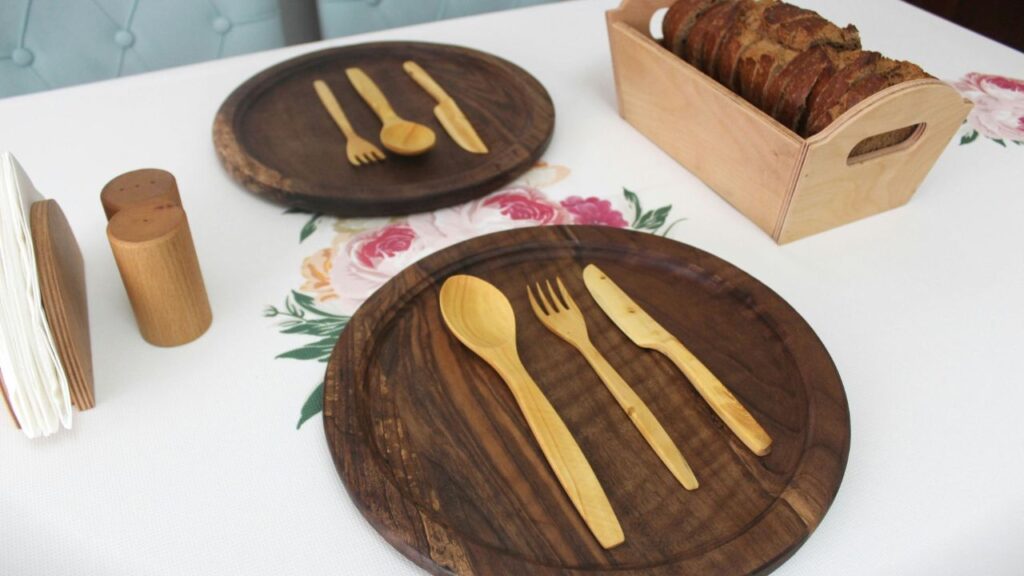
Why Your Precious Cookware Begs for Olive Wood Tools
Olive wood utensils go best with your great non-stick pans, ceramic pots, olive wood kitchen utensils or cast iron pans that have been enamelled. The smooth, hard wood surface glides over delicate coatings without scratching or gouging them. This protects your investment and keeps pans looking newer for longer. Don’t worry about the loud clang of metal spoons that can harm surfaces or cheap plastics that might melt if they get too hot. When you use olive wood cooking tools, the handles stay cool, so you won’t burn your fingers. They don’t react with acidic foods like vinegar or tomato sauce, which keeps the flavors fresh and pure. They are the best choice for your favorite pots and pans because they are robust and soft at the same time.
The Surprising Natural Germ Resistance of Olive Wood
You might not realize this great benefit: kitchen tools made of olive wood naturally combat microorganisms! This old wood is thick and has chemicals in it that make it a little bit antibacterial. No wood is fully non-porous, but high-quality olive wood has a very tight grain that keeps moisture from getting in far better than softer woods or porous plastics. This makes it exceedingly tougher for germs to get inside the substance and grow. Your olive wood tools keep cleaner when you clean them properly and simply, like washing them by hand with light soap and warm water (never soaking or dishwashing!) and drying them completely. It protects your kitchen drawer like nature’s own built-in defence mechanism, olive wood kitchen utensils giving you peace of mind and beauty at the same time.
Turning Meal Prep into a Truly Sensory Experience
Using olive wood cooking tools to cook makes everyday life better. A heavy, smooth olive wood spoon is a lot of fun to use to stir soup, and a powerful spatula is a lot of pleasure to use to lift golden pancakes. Wood feels warm and friendly against your flesh, while metal feels cold and plastic feels artificial. They change the look of your kitchen. The rich, swirling grains and warm honey-brown tones look great in a crock or hanging on a rack. You might even smell the wood itself, olive wood kitchen utensils which adds another element to the experience. Using these tools makes you more aware of your food and makes everyday actions into moments of conscious connection with it.
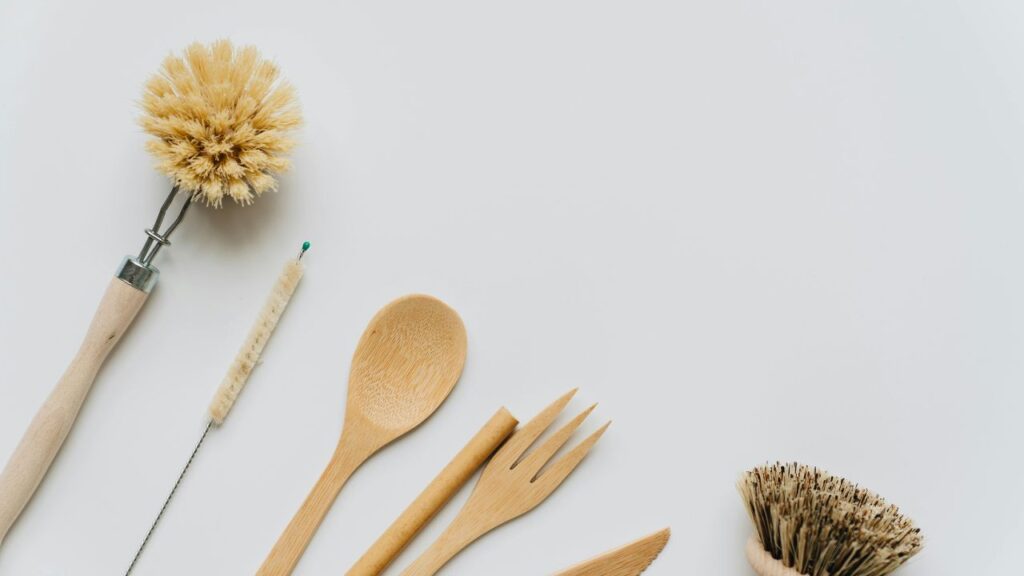
Simple Care for Lifelong Beauty: Keeping Your Olive Wood Happy
It’s easy to take care of your olive wood cooking tools, and doing so will make them last for decades. Always wash them by hand. After using it, wash it with warm water, a tiny bit of mild dish soap, and a sponge or cloth that is soft. Be sure to rinse well. Don’t ever put them in the dishwasher. The heat and strong detergents will dry up the wood and make it break. Also, don’t let them sit in water! Use a clean towel to dry them right away after washing. If you let them air dry, olive wood kitchen utensils water can get in. Every few months, especially if the wood looks dry or feels scratchy, give them a treat: massage a food-grade mineral oil or a wood conditioner made just for cutting boards all over.
Choosing Olive Wood: A Small Step for a Greener Kitchen
Choosing kitchen tools made of olive wood is a surprisingly wise choice for the environment. The wood usually comes from trees that have lived a long time and are no longer producing fruit (they can be hundreds of years old!). These lovely, useful things are made from these gorgeous trees instead of being burned or thrown away. This is a great way to use a natural resource. Cheap plastic utensils break easily and sit in landfills for hundreds of years, while metal tools need a lot of energy and resources to mine and make. Olive wood kitchenware that is of high quality will survive for generations; olive wood kitchen utensils it is not disposable. Choosing olive wood that lasts and can be used again means less waste, less resource use, and a more sustainable cycle.
Spotting Truly Top-Tier Olive Wood Kitchenware
Not all utensils made of olive wood are the same. If you know what to look for, you may be sure to acquire tools that are pretty, last a long time, and are fun to use. Look at the grain pattern first: High-quality pieces have tight, dense grains and typically have dramatic figures, knots, and beautiful colour changes (deep browns, creams, and black streaks). Don’t buy pieces that have big fractures, loose knots, or a lot of pale, mushy sapwood. Touch it to feel how smooth it is: The surface should be very smooth, with no splinters or rough spots. This is especially crucial where your hand grips. Look at the weight and thickness: Good olive wood cooking equipment should feel strong and heavy in your palm, not flimsy or thin enough to break quickly. Look for construction that is solid and in one piece:
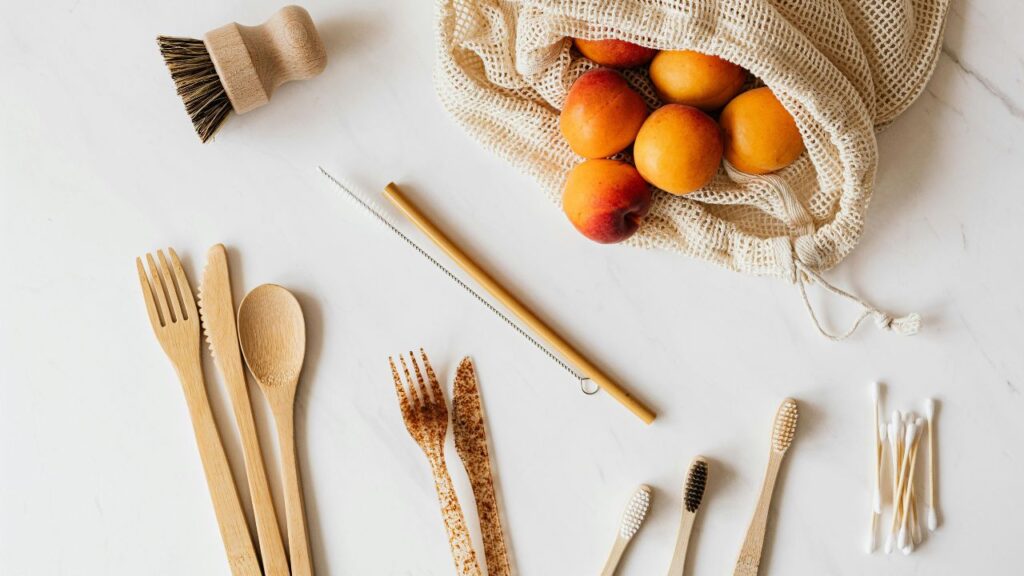
Olive Wood vs. The Rest How It Truly Measures Up
Are you curious about how olive wood compares to other common utensil materials? Let’s make it plain. Olive wood is better than plastic in every way: it won’t melt, it won’t scratch your pans as much, it doesn’t hold stains or smells, it’s naturally cleaner, and it lasts for decades instead of months. Olive wood protects sensitive cookware surfaces from metal (stainless steel), stays cooler on the handle, olive wood kitchen utensils feels warmer and more comfortable, and doesn’t clang or react with acids. Silicone is flexible and doesn’t scrape, but it can hold smells, doesn’t have the natural beauty and weight, and doesn’t feel as solid. Bamboo is good for the environment and not too expensive, but it is softer, less robust, and commonly laminated (which can peel). It also doesn’t have the peculiar, dramatic figure of ancient olive wood.
Must-Have Olive Wood Staples to Start Your Collection
Want to see how olive wood is different? Start with these useful basics that you’ll use all the time. A medium serving spoon is the most useful tool in the kitchen. It can be used to stir soups, sauces, stews, and serve food. Find one with a handle that feels well in your hand and a scoop shape that works well. You need a slotted spoon to serve dumplings, strain noodles, or scoop vegetables out of boiling water. You need a strong spatula or turner to flip eggs, pancakes, burgers, or fish without scratching them. Pick one with a narrow edge that can easily slip under food. A set of miniature cooking spoons is perfect for tasting, making dressings, or stirring small pots. Last but not least, think about Salad Servers.
Clever & Beautiful Uses for Olive Wood
Olive wood is beautiful for more than just spoons and spatulas! Think of ways to use this great material in your kitchen and dining room. People will notice an olive wood cheese or charcuterie board since it is a gorgeous piece of furniture. It is the perfect rustic yet elegant place to put your spreads. You can serve bread, fruit, nuts, salads, or even main dishes on olive wood bowls and platters. They lend warmth to your table. A lot of high-end kitchen knives have handles made of olive wood that are both pleasant and long-lasting. An Olive Wood Rolling Pin that is smooth and well-balanced feels great in your hands and rolls over dough easily. Olive Wood Salt Cellars and Pepper Mills are stylish ways to keep important things close at hand. The classic Honey Dipper design works great with olive wood.
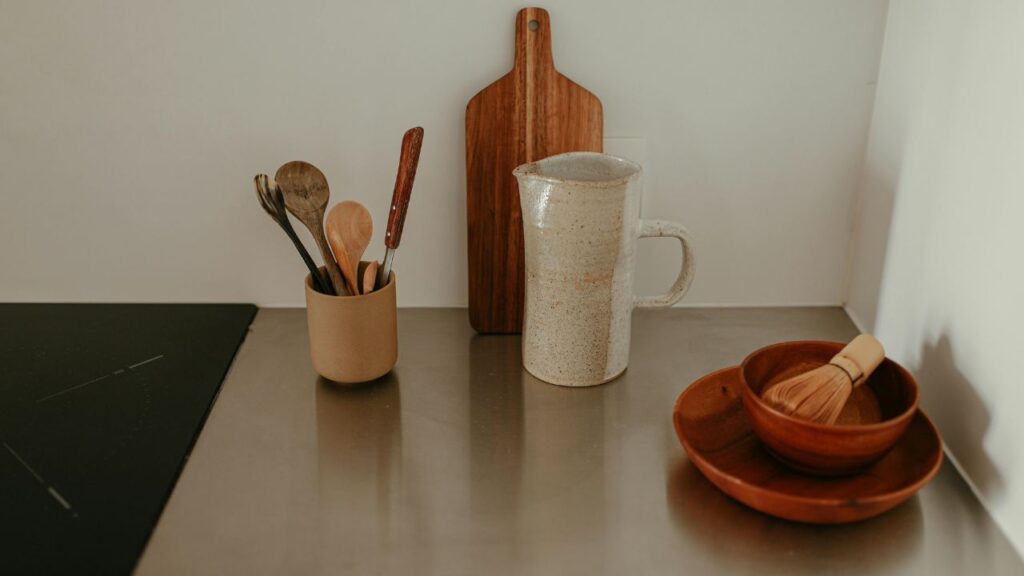
Finding Your Perfect Olive Wood Treasures Where to Shop
Are you ready to locate the finest olive wood kitchen tools? You have a lot of wonderful choices. You can see and feel the quality of the items in curated collections at specialty kitchen stores. For example, you can examine the weight and smoothness. Amazon, Williams Sonoma, Sur La Table, and Wayfair are just a few of the well-known online sites that sell a wide range of things. To obtain an idea of the quality of the grain and the work, read the photographs, descriptions, and reviews from other customers. Etsy and artisan craft markets are great places to find unique, handmade things made by experienced woodworkers. They are fantastic for locating things that are not mass-produced. Many Mediterranean stores obtain their items straight from locations that grow olives, such Greece, Italy, Spain, or Tunisia. This means that the items are real.
Crafting Heirlooms for Your Kitchen Legacy
One of the best things about high-quality olive wood cooking tools is that they could become family heirlooms. A spoon, spatula, or bowl that is adequately maintained can last a lifetime and be passed down to the next generation since the wood is so dense and strong. These instruments will never go out of style or break, unlike current devices. With usage, they get a wonderful patina. Each little mark recounts the tale of numerous family meals made with love. A beautiful set of olive wood kitchenware is more than simply a utilitarian gift. It’s a piece of art, a piece of history, and a promise of memories to come. The magic of olive wood lasts long and is really sweet. For instance, your child or grandchild could use the same wooden spoon that you used to mix the dough for a cake for their birthday.
Olive Wood Utensils vs. The Competition
| Feature | Olive Wood Utensils | Plastic Utensils | Metal Utensils | Silicone Utensils | Bamboo Utensils |
| Cookware Safety | Excellent (Non-scratch) | Good (Usually) | Poor (Scratches non-stick) | Excellent | Good |
| Heat Tolerance | Very High (No melting) | Low (Can melt/deform) | High (Handle gets hot) | Very High | Good |
| Durability | Exceptional (Decades) | Poor (Cracks, warps quickly) | Excellent | Good (Can tear over time) | Fair (Can splinter) |
| Eco-Friendliness | High (Renewable, Biodegradable) | Very Low (Landfill plastic) | Medium (Energy-intensive) | Medium (Long-lasting plastic) | High (Renewable) |
| Feel & Comfort | Warm, Solid, Substantial | Light, Often Flimsy | Cold, Hard, Can be Heavy | Flexible, Soft | Light, Natural but Softer |
| Hygiene | Good (Naturally Antimicrobial) | Poor (Absorbs stains/odors) | Excellent | Medium (Can hold odors) | Medium (Porous) |
| Aesthetics | Stunning, Unique Natural Grain | Functional, Often Cheap-Looking | Industrial Look | Colorful but Artificial | Simple, Uniform Grain |
| Maintenance | Easy (Hand wash, Occasional Oil) | Easy (Often Dishwasher Safe) | Easy (Dishwasher Safe) | Easy (Dishwasher Safe) | Medium (Hand wash, Oil needed) |
| Long-Term Value | High (Becomes Heirloom) | Very Low (Disposable) | High | Medium | Medium |
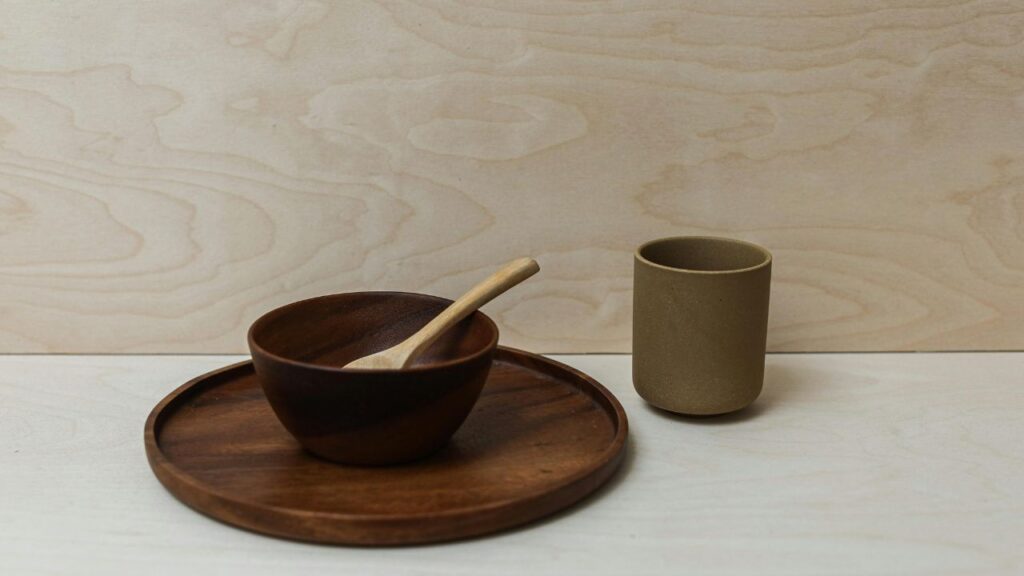
Elevate Your Kitchen with Olive Wood
Olive wood cooking tools are more than just useful. They are a way to spend money on a better, more sustainable, and more pleasurable method to cook. They preserve your pots and pans, make your kitchen cleaner, feel good in your hand, and make the room feel warmer and more inviting. When you choose them, you choose art that is original and natural over cheap, mass-produced goods that are the same. Adding olive wood cookware to your house makes cooking more tactile, attractive, and connected. You can start with just one spoon you love or steadily build a collection. These wonderful things will provide a touch of Mediterranean sunlight and lasting quality to your meals for many years to come. Enjoy their timeless beauty and take care of them effortlessly. Your kitchen and your culinary spirit will both feel better.
FAQ’s
1. What makes olive wood utensils different from regular wood spoons?
The Mediterranean has very old trees that make olive wood.It is very dense and has exquisite, one-of-a-kind grain patterns that you won’t find in other woods. It feels great in your hand, doesn’t scratch easily, fights germs organically, and becomes better with time. It seems like nature made it for your kitchen!
2. Will olive wood utensils scratch my non-stick pans?
No way! That’s one of their special powers. The surface of olive wood is smooth and hard, which makes it quite comfortable. It glides over ceramic, enamel, and non-stick cookware without scratching or gouging, making it the safest partner for your favorite pots and pans.
3. Is it true olive wood fights germs?
Yes, it has a great natural advantage! Olive wood includes a lot of compounds that help kill bacteria. Its tight grain also keeps moisture out better than softer woods or plastic, which makes it hard for bacteria to develop inside. Just remember to wash it by hand and dry it right away!
4. How do I take care of olive wood utensils? Is it hard?
It’s really easy! You should wash them by hand with warm, soapy water after you use them. Don’t put them in the water. Then, use a towel to dry them off well. Don’t ever put them in the dishwasher. Every few months, put a little food-grade mineral oil on the wood to keep it healthy and looking good. That’s all!
5. Why is olive wood considered eco-friendly?
Olive wood is an excellent choice for the environment! The wood usually comes from trees that have been present for hundreds of years and no longer provide fruit. This way, the wood doesn’t go to waste. These tools also persist for decades, perhaps generations. Cheap plastic, on the other hand, breaks easily and fills up landfills. It looks beautiful, is robust, and can be used again.
